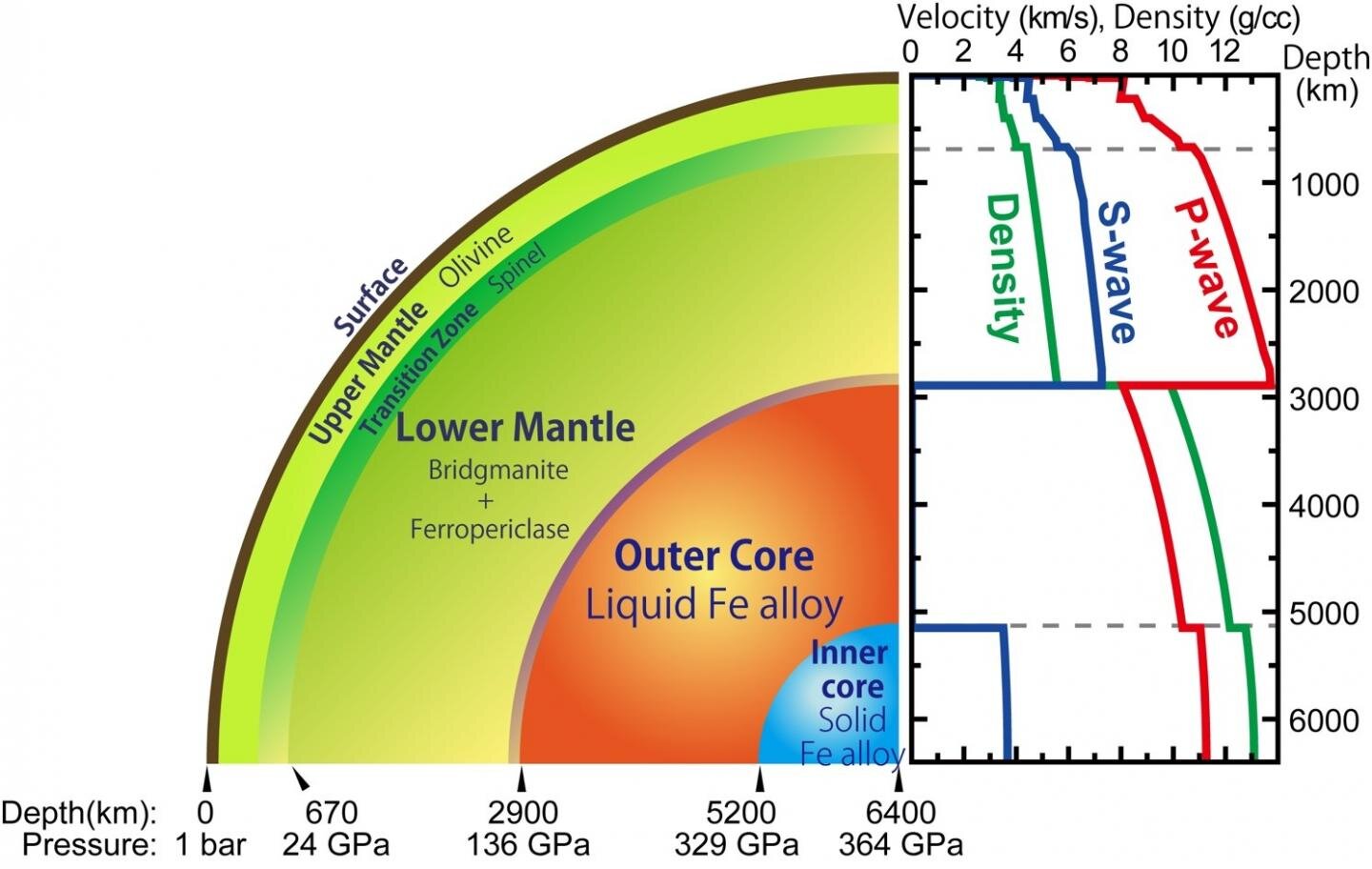
 136 gigapascals (1.36 million atmospheres) and> 4000 C. The velocity and sound density profiles of the interior depths of our planet are given by Seismological Observations. Credit: Assistant Professor Yoichi Nakajima “width =” 800 “height =” 480″/>
136 gigapascals (1.36 million atmospheres) and> 4000 C. The velocity and sound density profiles of the interior depths of our planet are given by Seismological Observations. Credit: Assistant Professor Yoichi Nakajima “width =” 800 “height =” 480″/> Our planet has a layered structure of silicate mantle and metal core. The liquid outer core is located 2900 km below the surface, where the pressure and temperature are extremely high,> 136 gigapascals (1.36 million atmospheres) and> 4000 C. The velocity and sound density profiles of the interior depths of our planet are given by Seismological Observations. Credit: Assistant Professor Yoichi Nakajima
Using the large SPring-8 synchrotron radiation facility in Japan, a collaboration of researchers from Kumamoto University, the University of Tokyo, and others in Japan and France accurately measured the density of liquid iron under conditions similar to those of the outer core of Earth: 1,000,000 atm and 4,000 degrees C. Accurate measurements of the density of liquid iron in such extreme conditions are very important in understanding the chemical composition of our planet’s core.
Earth has an inner core of solid metal and an outer core of liquid metal located about 2,900 km (1,800 miles) below the surface, both of which are under very high pressures and temperatures. Since the main component of the outer core is iron, and its density is considerably less than that of pure iron, it was thought to contain a large number of light elements such as hydrogen and oxygen. Identifying the type and quantity of these light elements will allow a better understanding of Earth’s origin, specifically the materials that made up Earth and the environment in the core when it separated from the mantle. However, this first requires an accurate measurement of the density of pure liquid iron at extreme pressure and molten core-like temperature in order to compare densities.
As pressure increases, the melting point of iron also increases, making it difficult to study the density of liquid iron under ultra-high pressure. Previous measurements of high-pressure liquid iron density stated that it was approximately 10% higher than the density of liquid iron under central conditions, but the shock compression experiments used were assumed to have a large error.

A metal sample is placed inside a heat insulated rhenium gasket, compressed between two diamonds to generate high pressure, and heated with a near infrared laser. Density measurements under such high pressure and high temperature conditions are performed by irradiating the sample with X-ray rays. Credit: Assistant Professor Yoichi Nakajima
Current work improves these measurements by using high intensity X-rays at the SPring-8 facility to measure X-ray diffraction of liquid iron under ultra-high pressures and high temperatures, and apply a novel analytical method to calculate liquid density. Furthermore, the sound velocity profile of the liquid was measured under extreme conditions of up to 450,000 atm. The data was collected at various temperatures and pressures and then combined with previous shockwave data to calculate the density of conditions across the Earth’s core.
Currently, the best way to estimate the density of the Earth’s outer core is from seismic observations. Comparing the density of the outer core with the experimental measurements in this study, pure iron is found to be approximately 8% denser than that of Earth’s outer core. Oxygen, which has been considered a major impurity in the past, cannot explain the difference in density, suggesting the presence of other light elements. This revelation is a major step toward estimating the chemical composition of the nucleus, a world-class problem in Earth Science.
“Around the world, many attempts have been made to measure the density, speed of sound and the structure of liquids under ultra-high pressures using laser-heated diamond cells for over 30 years, but so far none have been successful. “said Dr. Yoichi Nakajima, One of the main members of the research collaboration. “We hope that the technological innovations achieved in this study will dramatically accelerate research on liquids under high pressures. Eventually, we believe this will deepen our understanding of the liquid metallic core and magma deep within Earth and other rocky planets.”
The reproduction of the central conditions suggests that the Earth’s outer core is less dense than liquid iron.
Yasuhiro Kuwayama et al, Equation of State for Liquid Iron in Extreme Conditions, Physical Review Letters (2020). DOI: 10.1103 / physrevlett.124.165701
Provided by Kumamoto University
Citation: Accurate measurement of the density of liquid iron in extreme conditions (2020, June 26) retrieved on June 27, 2020 from https://phys.org/news/2020-06-precise-liquid-iron-density-extreme .html
This document is subject to copyright. Other than fair dealing for private research or study purposes, no part may be reproduced without written permission. The content is provided for informational purposes only.